Q is a pretty underappreciated letter of our alphabet fruits that start with q – rarely used, and when it is, it’s for weird words like quail and quad and qigong. You probably can’t conjure up that many nouns that begin with the letter Q. Fruits Starting With Q
In samples of text, the relative frequency of the appearance of the letter Q is only 0.22% of letters (in dictionaries, this is slightly higher at 0.49% of letters, but this is still far lower than its neighboring letters in the alphabet – P takes up 4.3% of sample texts, and 7.7% of dictionaries).
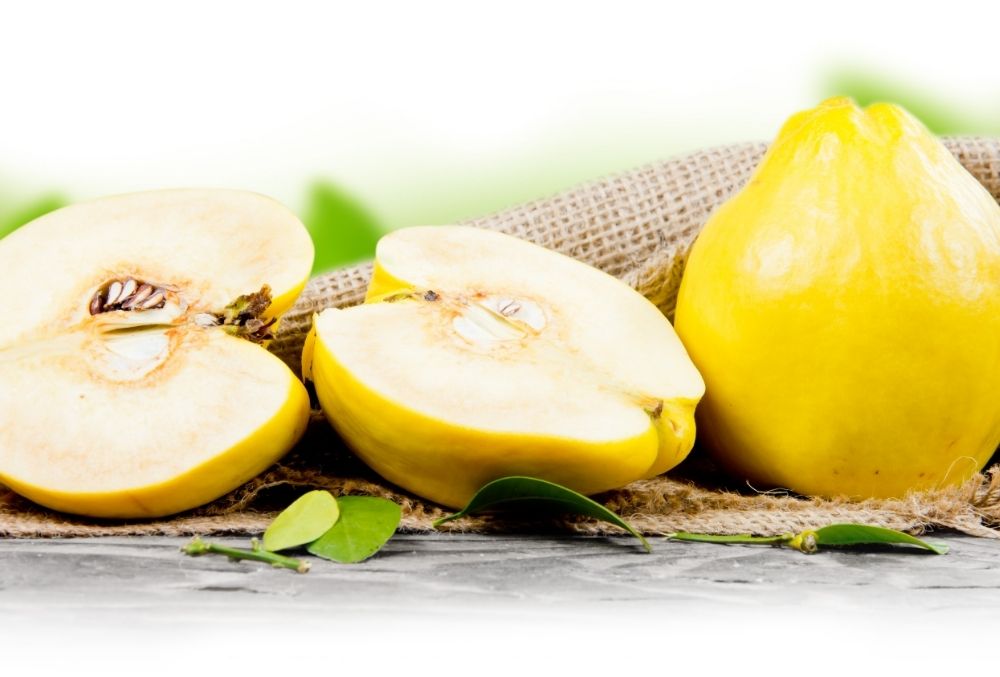
You might not have heard of many fruits that begin with the letter Q, but we’re here to right that – this article will take you through all of the well known (and not so) fruits that start with the letter Q.
Read on to find out more.
1. The Quince
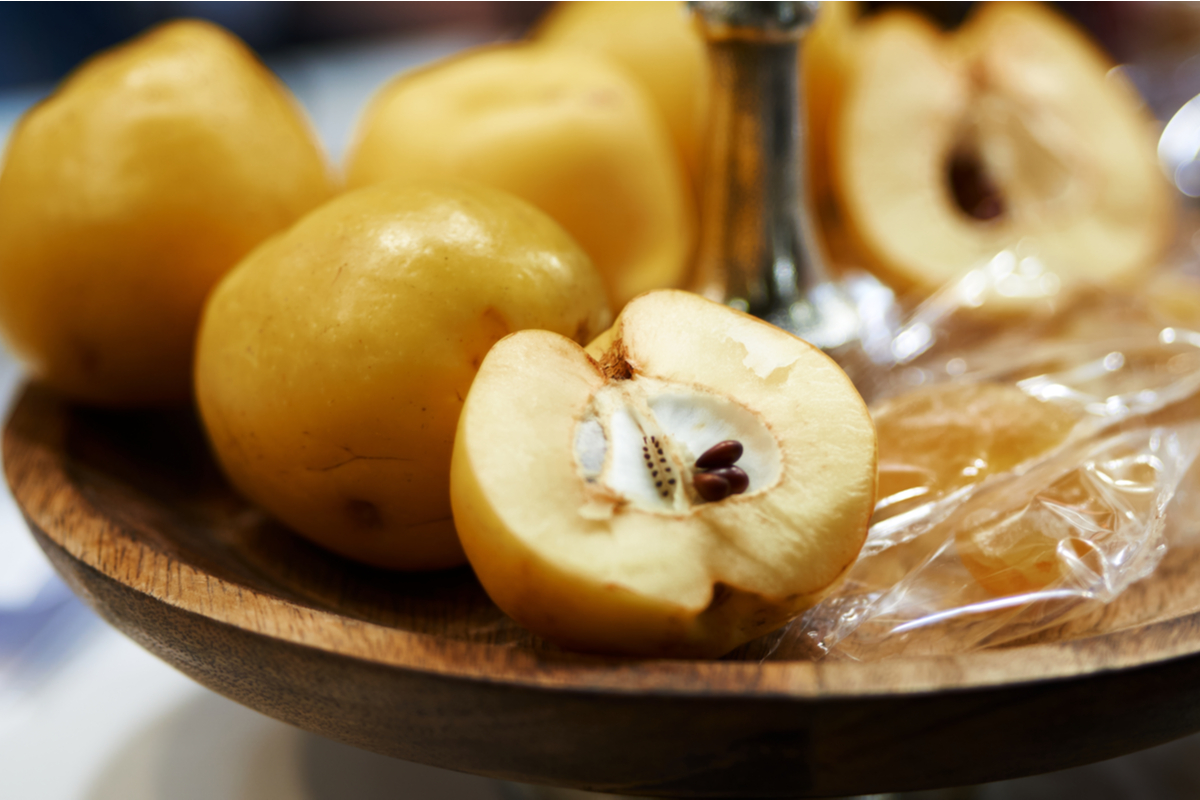
The quince is probably the fruit on this list that you are most likely to have eaten prior to reading this list. It is a fruit that is from the same family as the pear, but unlike the pear, you can’t really eat the quince raw.
It is considered completely inedible when raw, not because it is poisonous, but just because it is incredibly gross. This is due to its astringent, sour, gnarly stripping flavor, which needs some kind of cooking for it to be edible.
Slices of quince go well in fruit-based desserts, like apple crumble, or can be cooked into a tasty jelly, which goes well on toast or charcuterie boards.
You can turn your raw quince fruits into a delicious quince jelly by slicing the fruit, placing it in a pot with water and sugar, so all of the fruit is covered, and letting it simmer until all of the fruit softens, and takes on a jam-like consistency.
When cooked, quince can smell like a perfume, and some people even use it as an air freshener in their home or car, because of its attractive scent.
If you want to grow quince trees in your own garden, so you can harvest your own quince fruits in the fall, you should place the tree in a sunny spot in your garden, and basically leave it be – as quince trees are easy to look after, and not prone to many pests or diseases that other common fruit are susceptible to.
Just keep watering regularly through the summer months, and you should have your own crop of quinces to cook come October.
2. The Queen Anne Cherry

The Queen Anne cherry is a kind of sweet cherry that is similar in both appearance and flavor to the slightly more common Rainer cherry.
They are an attractive light pink and yellow color combination, which has a firm texture, and a delicate, sweet cherry flavor.
They are high in beneficial nutrients, such as vitamin C and anti-inflammatory compounds. Studies have even shown that cherries can help to treat conditions like arthritis, diabetes, and hypertension.
The Queen Anne cherry tree itself is a perennial semi-dwarf tree that has dark green leaves, and clusters of tiny, fragrant, white flowers. When pollinated and fertilized, their flowers will grow into cherry fruits, which can typically be harvested in mid-summer. Each flower that is successfully fertilized will go on to produce a single Queen Anne cherry.
A mature cherry tree will be about 12 to 15 feet tall. The trees like full sun, and moist soil with good drainage.
If you are thinking of growing Queen Anne cherries, then you will need to live in quite a mild, temperate climate, where the average winter temperature does not drop below around 10 degrees Fahrenheit.
Typically though, hobby gardeners tend to stay away from sweet cherry trees, because they are pretty delicate, finicky, and time-consuming.
Related: 12 Juicy Fruits That Start With J (Including Pictures)
3. The Quandong
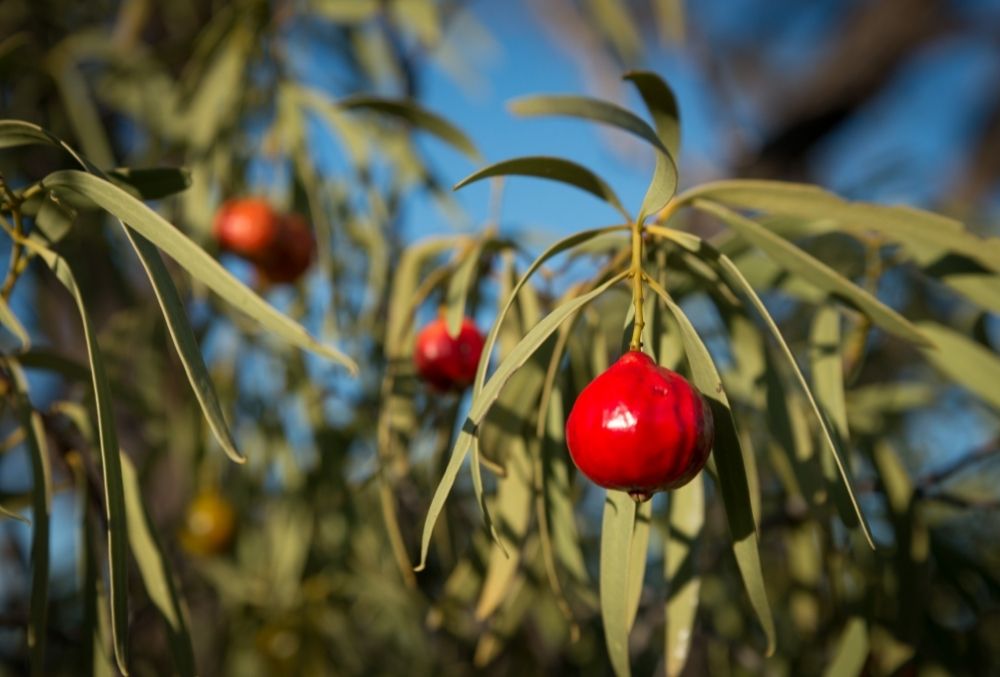
This is a member of the peach family, which is quite popular in Australia, where they are native, and grow wild in the outback.
The quandong (sometimes also known as the desert quandong, the sweet quandong, or the native peach) is a small red fruit from a tree in the sandalwood family. As it is native to Australia, it has a really long history of usage by the Aboriginal peoples.
Now, however, it is eaten as a superfood by many Aussies, with Aboriginal heritage and without.
In appearance, it is a small sphere (maybe around the size of a strawberry), with bright red, slightly lumpy skin, almost like an oversized berry! Despite the bright-colored, plump exterior, the fruit is actually mostly seed when you break it open.
The fruit consists of a thin (but tasty!) flesh, wrapped around a large seed, which is traditionally crafted into jewelry. These big seeds (sometimes known as quandong nuts) can also be eaten roasted or raw.
The red, pulpy flesh itself (meager as it is) has a distinctive flavor that is used in jams, pies and chutneys.
The quandong doesn’t just have culinary and jewelry manufacturing purposes, however, as it also has some medicinal properties.
In bush medicine, the red quandong fruits are used to treat a variety of ailments and illnesses, which range from toothache to wounds. This is because the fruit itself has antibacterial properties, which makes it a must for aboriginal healers.
These trees basically only grow wild in the outback, because the tree itself is a partial root parasite, meaning cultivation is difficult and has been mainly only experimental, and with very little success.
4. The Quararibea
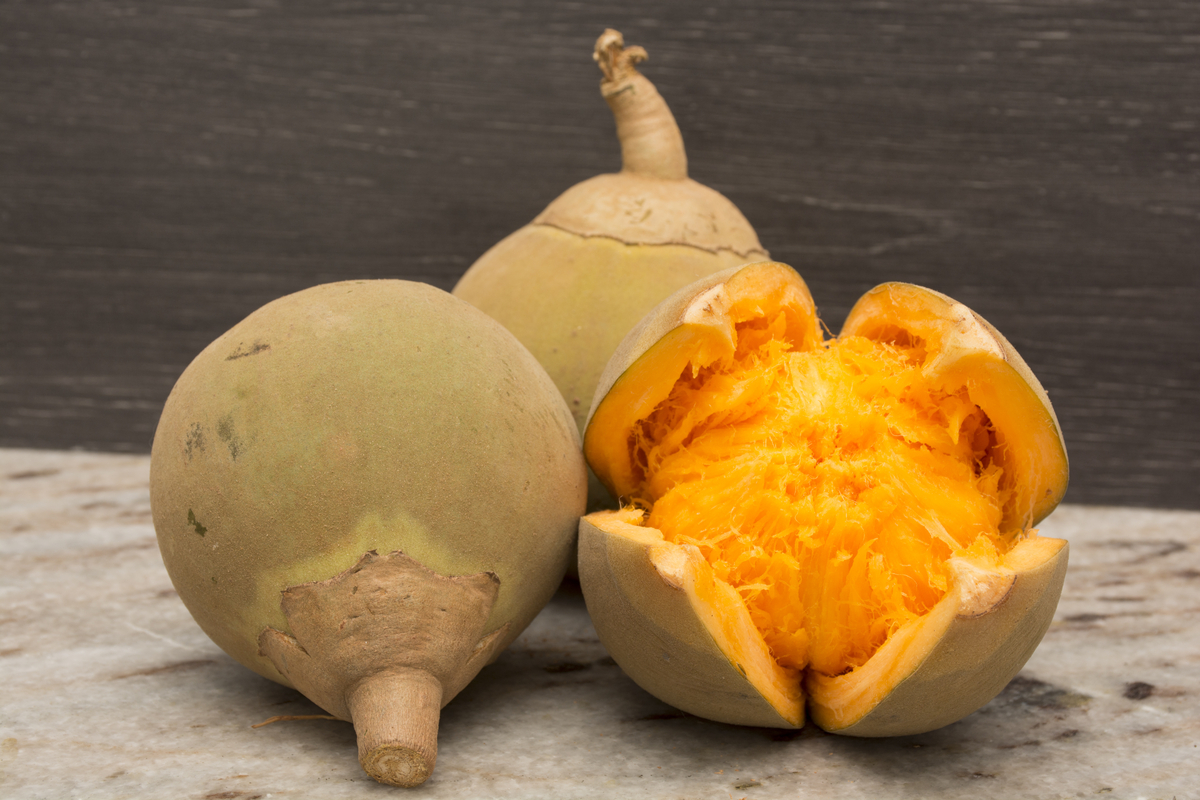
The quararibea is an interesting fruit that looks a little bit like mangoes, but has a taste that is more reminiscent of apricots, mixed with the earthy, vegetal flavor of pumpkins.
This unique, tropical tasting fruit is a native tree to South America, in regions like the Amazon rainforest of Brazil, Colombia, Ecuador, and Peru.
In appearance, other than looking like a mango, the fruit is either orange or yellow, and bears soft, juicy, sweet fruits, which tend to contain two to five seeds.
Before they reach maturity, the fruits resemble large, unripe green figs, growing in clusters, and sometimes with alien-looking tropical flowers on top.
Unfortunately, unless you live in South America, it is unlikely that you will find quararibea fruits in your local supermarket, as they are not really cultivated outside of Brazil, Venezuela, or Colombia.
If you are in one of the areas that it is grown, you will have better luck finding it if you find it under its local name – chupa chupa.
They are also made into a popular local cocktail, which is made from quararibea fruit, lime juice and passion fruit liqueur – a great way to get drunk and get your vitamin C all in one go!
5. The Querina Apple
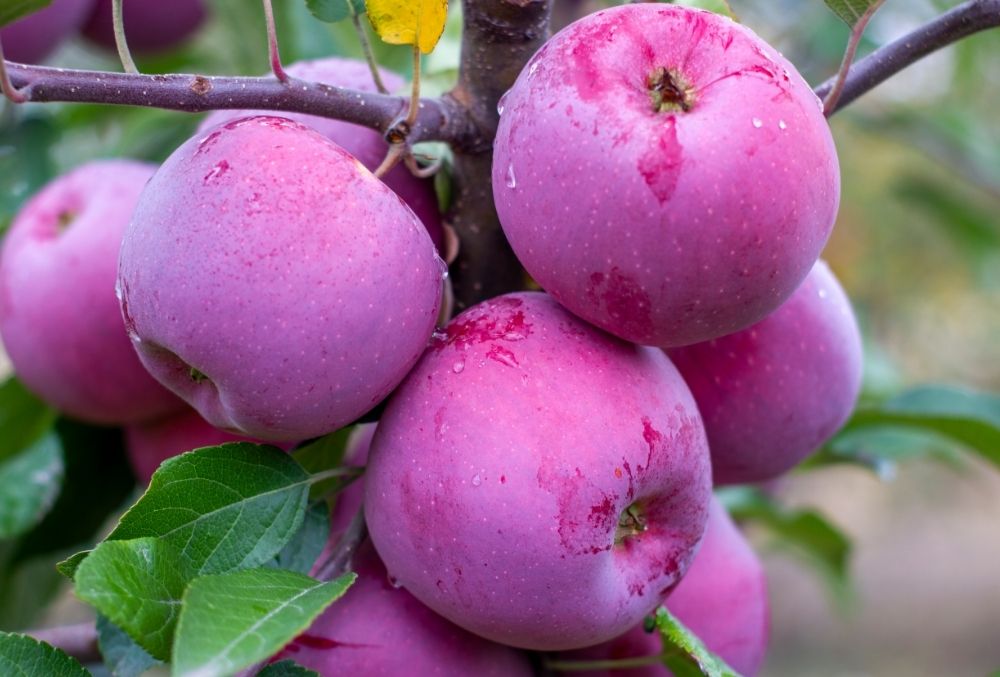
This apple (which is also known under the name Florina apple in the US) is a French type of domesticated apple, which has characteristics taken from the more common Golden Delicious, Rome, and Jonathan apples.
The Querina apple tree bears medium to large sized fruits, with skin that is a vibrant purple to red color, that changes to yellow round the back.
The fruit’s flesh is firm and aromatic, that has a sweet-tart flavor profile, which is suited well to being eaten fresh. These apples were first commercialized in the 1980s, and has been a favorite ever since, both for its delicate, nearly aromatic taste, and its use as a fruit used for cider making.
They are a popular cider fruit, as they delicately strike the balance between sweet and tart flavoring. They also last for a long time – three to six months when stored correctly, so brewers don’t have to rush to make their cider immediately after picking the apples.
Related: 13 Different Fruits That Start With V (Including Photos)
6. The Quenepa Fruit
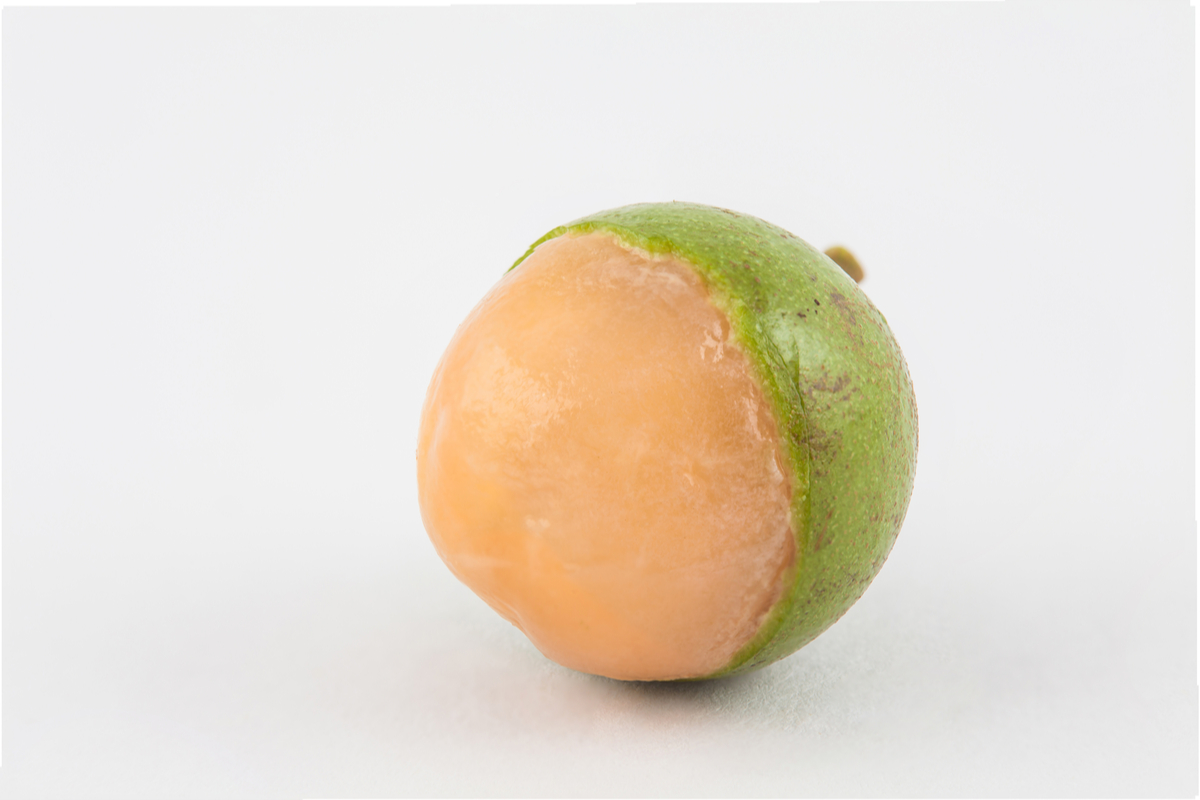
The quenepa fruit (also sometimes referred to as the guinep fruit, or the Spanish lime) is a popular tropical fruit in regions like the Caribbean.
The fruit is related to the soapberry plant, and looks like a green grape (with a lychee inside). It has smooth green skin and a yellow to light orange pulp. Throughout the Caribbean islands, you can see vendors selling bags of quenepa fruits by the side of the road.
These fruits are most commonly eaten raw, or blended into a juice, as their tangy, juicy interior can help to refresh you in the intense, tropical heat. Even the seeds can be eaten – we recommend that you roast them, and then crack the hard shell, and enjoy a crunchy snack.
The quenepa fruit grows in clusters on a tree called the mamoncillo. The mamoncillo doesn’t only produce tasty fruits, but it also has leaves with medicinal values.
You can boil them to make a medicinal tea, which is great for relieving pain and lessening the symptoms of intestinal issues, like peptic ulcers and stomach aches.
If you want to grow a mamoncillo tree for quenepa fruits in your own backyard, then you might be in for a little bit of a wait – the tree has to be planted as a sucker or a seed, and then fertilized until it reaches maturity, meaning that it can take five to ten years before it produces fruits.
Final Thoughts
There is a big variety in the fruits that start with the letter Q, from common grocery store staples cherries, to apples, all the way to tropical fruits that you probably won’t be able to find without a trip to the Amazon rainforest or the Australian outback. All of them are tasty, and utterly unique. Fruits Starting With Q
We hope you learned something from this article, here are other articles that you can learn from:
14 Fruits With Seeds (Including Pictures)
Pumpkins: Growth Time and Stages of Development From Seeds To Fruits







